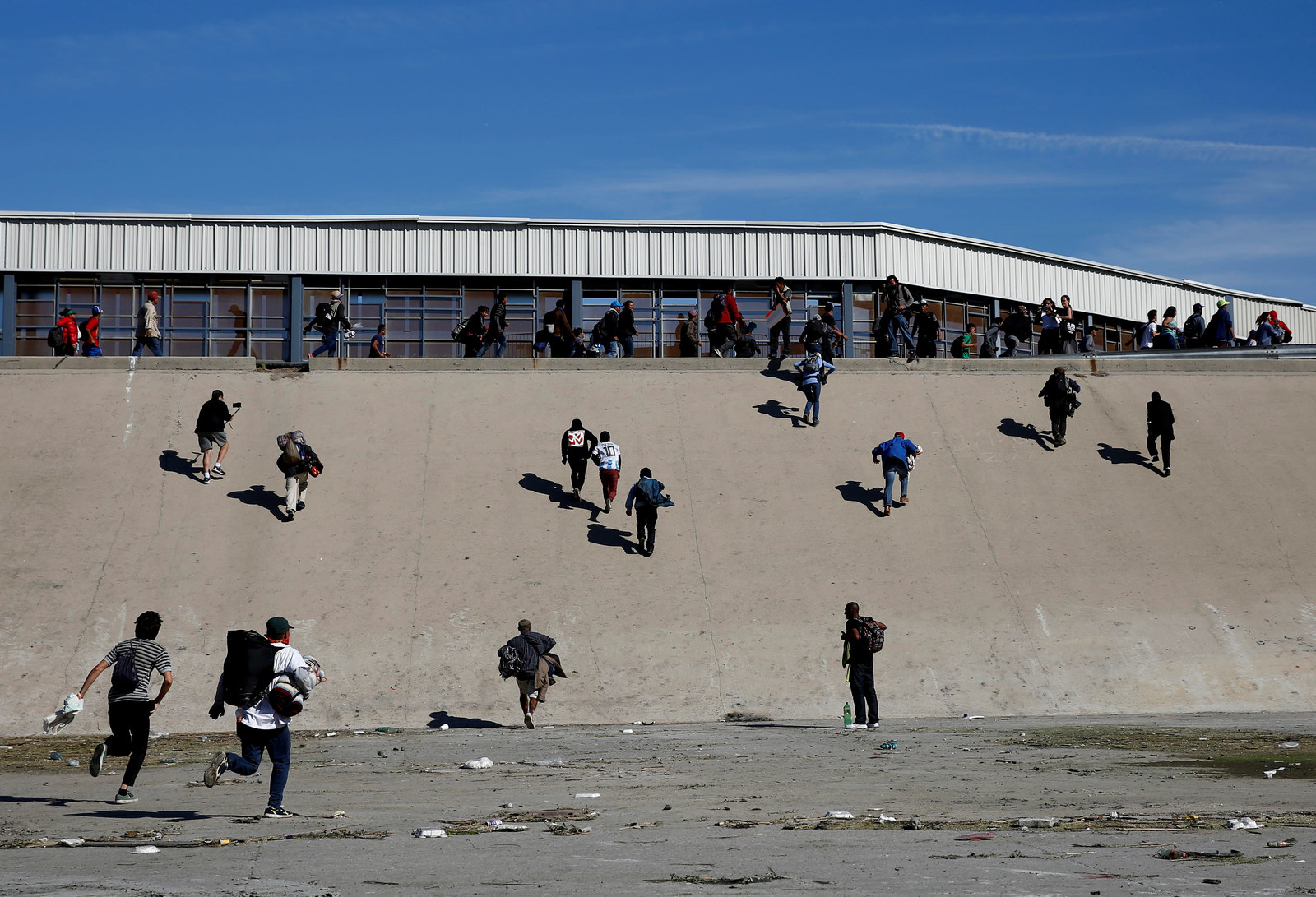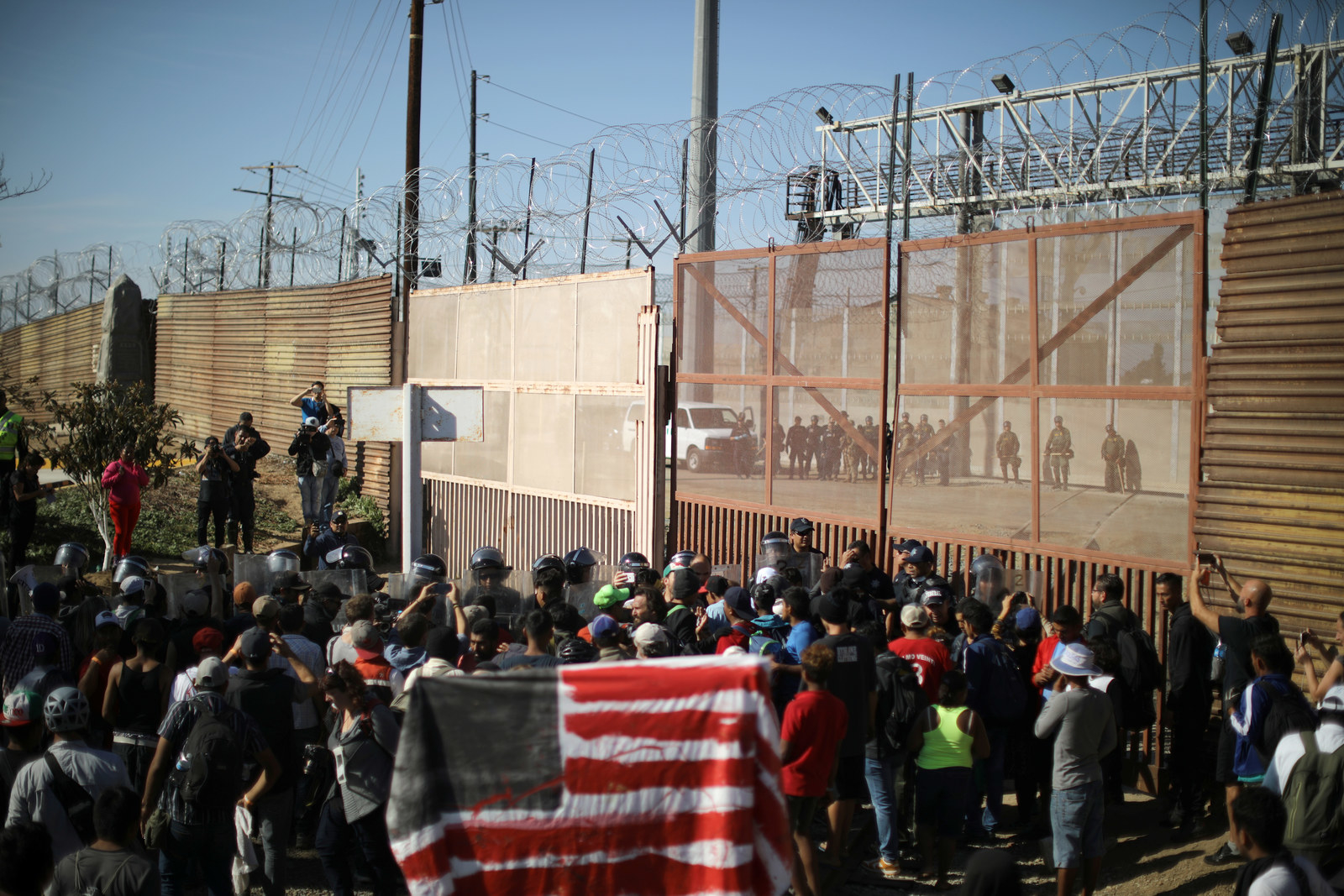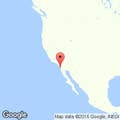
TIJUANA, Mexico — For Trump administration officials, an unprecedented confrontation at the US–Mexico border on Sunday invited an assessment that their policies have only exacerbated the problems of an overwhelmed immigration system whose court backlog has grown larger since President Trump’s inauguration 22 months ago.
León Rodriguez, who headed the US Citizenship and Immigration Services agency from 2014 to 2016, didn't want to comment on the events on the ground, but said what happened at the border seemed to be “a foreseeable result of the US policy of placing every conceivable obstacle in the way of orderly legal migration and of not having a policy that [recognizes] the desperate circumstances driving migration.”
Mexican officials shared that negative assessment. Héctor Gandini, who will take over as spokesperson for Mexico’s Interior Ministry when Mexico swears in a new president on Saturday, said that the US use of tear gas on migrants attempting to cross illegally into the country was “not correct. We don’t want them to hound migrants.”
“You have to respect migrants’ human rights,” Gandini added.
For Josué Rosales, one of the migrants who took part in the ill-fated march to the border, what began as a journey of hope had turned into one of despair, one that promised weeks of more nights inside the tent he’s now sharing with his girlfriend on the grounds of the Benito Juarez stadium, where the caravan has been camped for days. He said he’s not ready to give up.
“I'm waiting to see if Trump comes to some type of agreement that allows us to cross,” Rosales said. “If he says no we'll figure out another way to cross.”
The Trump administration faces a situation its best efforts have failed to control.
Administration officials have imposed a number of policies to discourage migrants from seeking to enter the United States. Then-attorney general Jeff Sessions personally rewrote key immigration court decisions to eliminate domestic violence and fear of gang violence as reasons for asylum to be granted. The administration imposed a controversial family separation policy that was intended to discourage parents from crossing the border with their children. Trump dispatched 5,800 US active-duty soldiers to the border in a show of force that many critics also claim was a blatant political ploy ahead of the midterm elections earlier this month.

And yet border apprehensions are at the highest level yet of the Trump administration (though still at historically low levels), family detentions are at record levels, and the number of people granted asylum actually rose in the fiscal year that just ended, to the highest level in two decades.
In Tijuana, where the number of would-be asylum-seekers is growing by the day, immigration attorneys and advocates describe a bottleneck system that makes asylum-seekers wait weeks before they can seek to enter the US for refuge. That’s created an enormous backlog.
And the situation promises only to get worse as more people seeking to reach the US arrive in Baja California, the Mexican state that abuts California. Mexico's Interior Ministry said there are 8,247 people now in Mexico who are traveling as part of so-called caravans from Central America. The vast majority of migrants — 7,417 — are in the cities of Mexicali and Tijuana. The other 424 are in a Mexico City shelter, 253 are in the Mexican state of Sinaloa, and another 153 are making their way north on their own. It's unclear how many of them will ask for asylum.
Caring for the migrants is costing about $27,000 daily — money Tijuana’s mayor says the city does not have.
Sunday's march to the border was intended to be peaceful, but it devolved into a frantic rush toward the border fence after the group, which numbered about 500, according to the Mexican Interior Ministry, was blocked from reaching the San Ysidro port of entry by a line of Mexican federal police.
The crowd skirted the police line and rushed across the Tijuana River’s small stream that runs next to the walkway leading to the port of entry.
Then after being blocked on the street in front of the Chaparral border crossing by metal barriers and another line of federal police with shields, a group walked to a train border crossing a few minutes away.
Several members of the group told BuzzFeed News they wanted to negotiate some type of agreement with the Trump administration that would let them enter the United States. Others said they hoped to be able to cross into the US as a group.
Instead, US border officers met them with tear gas and pepper balls, according to a statement from Customs and Border Protection, the agency responsible for border law enforcement.
CBP said its officers deployed the tear gas and pepper balls after some members of the group threw objects, including rocks, at agents while others tried to enter the United States illegally, some through a gap in the metal barrier along the railroad tracks.

But not all immigration officers were willing to defend the US actions. One US asylum officer, who could not talk about policy publicly, said the confrontation likely was the result of the US’s inability or unwillingness to process asylum claims at the border daily. The officer said USCIS recently had told staff to be on standby to be sent to San Diego to help hear asylum claims.
“I’m just glad nothing worse happened,” the officer said. “I think it’s illegal that they closed the border. We cannot decide when we can close the border if there’s no state of emergency. For a couple dozen asylum-seekers? That was not an emergency that should justify closing the border. I’m just relieved it wasn't worse.”
Another government official, who works on the issue but does not make policy, blamed the Trump administration for the tensions at the border.
“Trump has broken the law by not having people at the border processed for months and months and creating a bottleneck there,” the official said. “Teargassing children because maybe they’ll get into the US? Heaven forbid.”
Mexican authorities late Sunday were contemplating what to do next. In a press release, the Interior Ministry said Mexican police had retaken control of the area leading to the San Ysidro port of entry and that Mexican troops would not be deployed “despite the magnitude of the situation.”
A government official who requested anonymity because they were not allowed to talk to reporters told BuzzFeed News that 30 migrants had breached the border and were promptly detained by CBP. Rodney Scott, chief patrol agent for the San Diego region, said agents ended up arrested 42 people who crossed into the US during the confrontation on Sunday.
The National Migration Institute said that it planned to deport as many as 500 others who attempted to cross into the US illegally but were unsuccessful. Since the first caravan entered Mexico on October 19, 11,000 migrants from Honduras, Guatemala, El Salvador, and Nicaragua have been deported.
The escalation at the border comes at a complicated time — the country’s embattled president, Enrique Peña Nieto, will conclude his mandate in less than a week.
BuzzFeed News revealed earlier this month that the Trump administration was attempting to broker a deal that would force people to wait in Mexico while their asylum cases were processed. The Washington Post reported that incoming Mexican president Andrés Manuel López Obrador’s transition team had agreed to this plan, but that report was disputed by the same officials it cited; they pointed out that López Obrador’s government would not take office for several more days. “There is no agreement of any sort between the future government of Mexico and the US government,” said a press release from López Obrador’s transition team.
Immigration promises to be a major challenge for López Obrador, who has pledged to give work permits and offer jobs to Central American migrants in Mexico. Detentions and deportations of migrants have increased steadily since 2014, when the government launched the Southern Border Program, shortly after a large wave of unaccompanied minors surged across the US–Mexico border.

Sunday’s events were much different from the results of a spring caravan that arrived in Tijuana in late April with hundreds of asylum-seekers. The group camped out on the grounds of the Chaparral border crossing for days after being turned away by CBP agents because the port of entry was at capacity. Over several days, small groups of asylum-seekers were allowed into the US to make their claim, 93% of whom passed what's known as a credible fear interview, a crucial first step in the asylum application process.
But that caravan was much smaller, at most 1,500 at its start in southern Mexico, than the thousands now waiting in Tijuana, and its members had been vetted by the NGO that led it, Pueblo Sin Fronteras, to weed out those whose asylum claims were likely to be found without merit by the time it reached the border. In the end, only 228 people sought asylum in a process that took just five days. Separately, other members of the caravan asked for asylum before and after those five days, putting the total number of asylum-seekers at 401.
This time around, asylum-seekers have been told they would likely have to wait weeks in Tijuana before they could ask the US for refuge because of a backlog at the border. The current expected wait to begin the process is now up to six weeks.
Delay at the border for requesting asylum is nothing new, but it’s been getting worse under Trump. The Department of Homeland Security’s inspector general found recently that US immigration authorities’ inability to handle the number of people seeking asylum at ports of entry had forced migrants to cross illegally.
But there’s little sign that US officials are planning to take steps to improve the wait times.
And the likelihood is great that those who must wait in Tijuana will find only that their frustration will grow in the coming months.
“It’s difficult because we came as one peaceful caravan and now we’re just waiting here without any results,” Rosales, the march participant, told BuzzFeed News. “We’re sitting in the sun, thirsty, hungry, with no resolution to our situation.”



